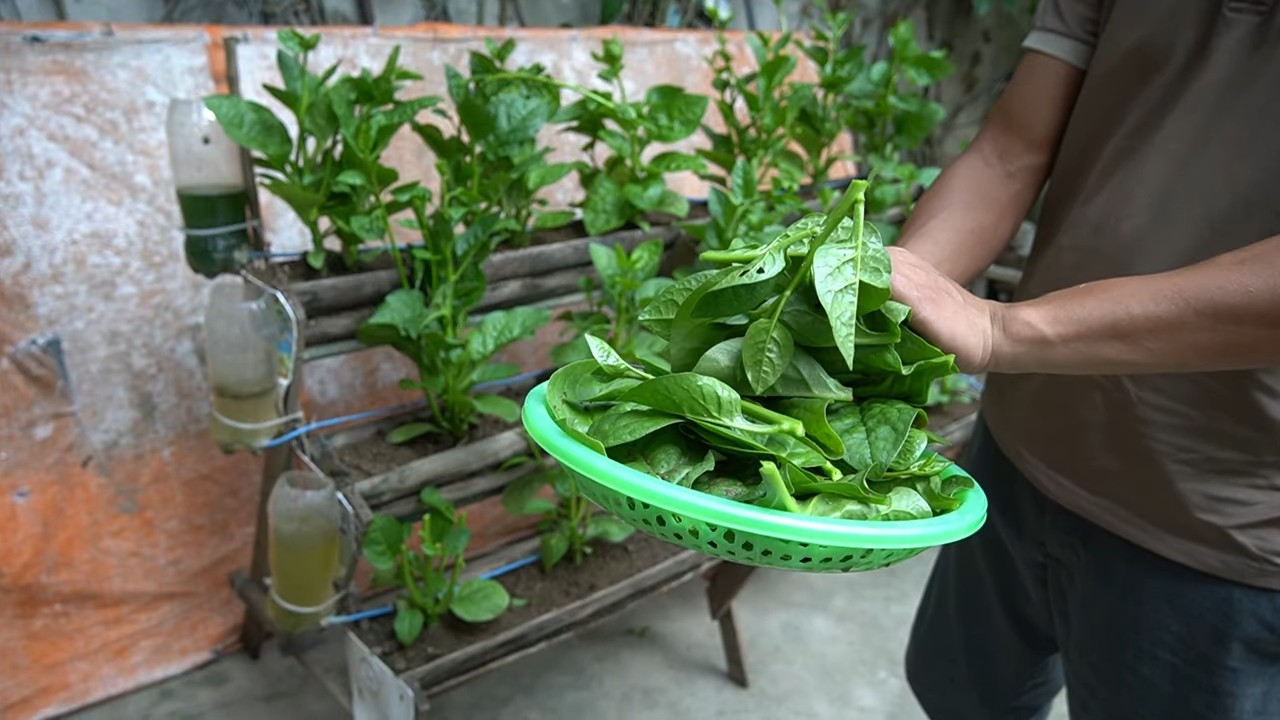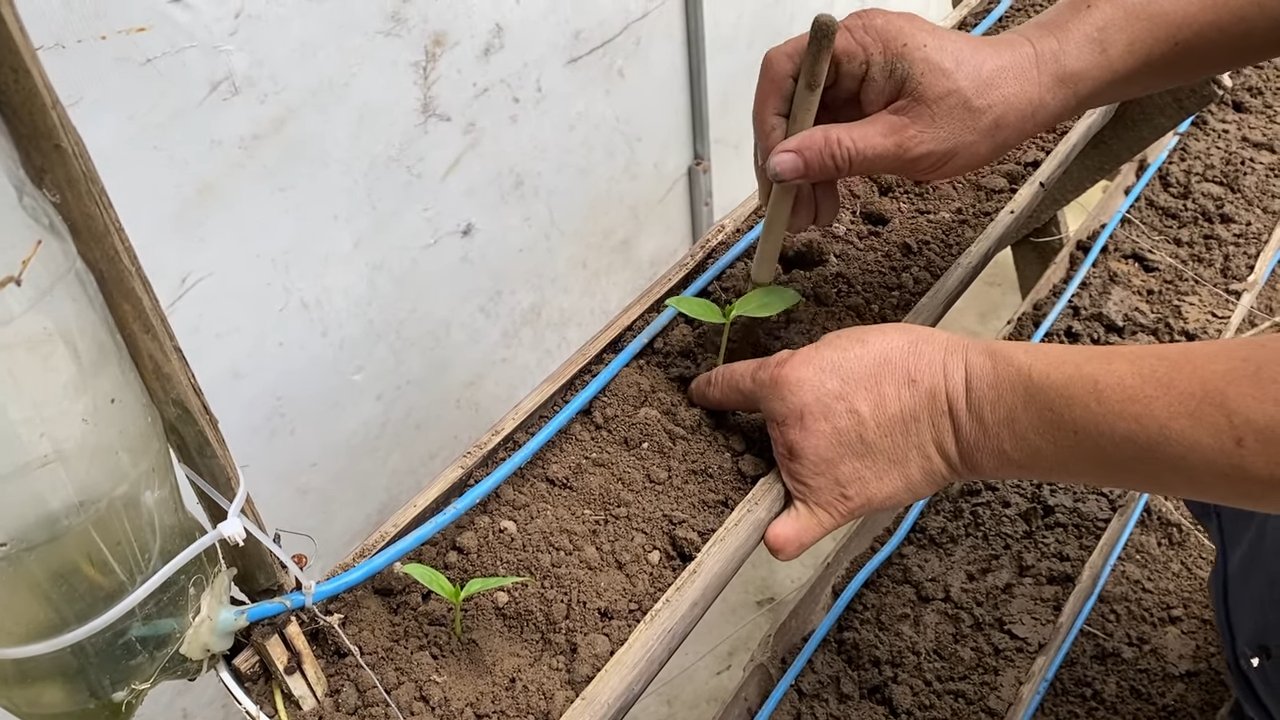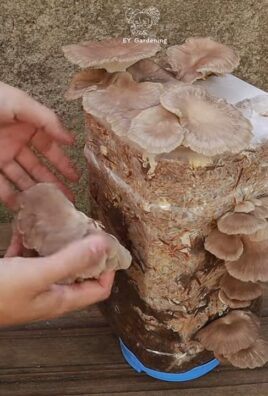Rooftop garden kale growing might sound intimidating, but trust me, it’s easier than you think! Imagine stepping out onto your own private oasis, a vibrant green space bursting with fresh, healthy kale, all grown with your own two hands. Forget those bland, pre-packaged greens from the supermarket; we’re talking about crisp, flavorful kale, ready to be transformed into delicious salads, smoothies, or even kale chips.
For centuries, humans have cultivated gardens in unexpected places, from the Hanging Gardens of Babylon to the terraced rice paddies of Asia. The desire to connect with nature and grow our own food is deeply ingrained in us. But in today’s urban landscape, space can be a real premium. That’s where the magic of rooftop gardening comes in!
Why should you embrace rooftop garden kale growing? Well, beyond the obvious benefits of fresh, organic produce, it’s also a fantastic way to reduce your carbon footprint, beautify your living space, and even improve your mental well-being. Plus, growing kale specifically is a smart choice – it’s incredibly nutritious, relatively easy to grow, and can tolerate a wide range of conditions. In this article, I’m going to share my favorite DIY tricks and hacks to help you create a thriving rooftop kale garden, even if you’re a complete beginner. Get ready to unleash your inner gardener and transform your rooftop into a kale-filled paradise!

DIY Rooftop Garden: Growing Kale Like a Pro!
Hey there, fellow gardening enthusiasts! Ever dreamed of having a lush, green garden right on your rooftop? Well, dream no more! Today, I’m going to walk you through creating your very own rooftop kale haven. Kale is super nutritious, relatively easy to grow, and adds a vibrant touch to any space. Let’s get started!
Planning Your Rooftop Kale Garden
Before we dive into the nitty-gritty, let’s do some planning. This is crucial for ensuring your rooftop garden thrives.
* Assess Your Rooftop: First things first, check the weight-bearing capacity of your roof. This is super important for safety! Consult a structural engineer if you’re unsure. You don’t want your beautiful kale garden causing any structural issues.
* Sunlight: Kale needs at least 6 hours of sunlight per day. Observe your rooftop throughout the day to see where the sun shines the most.
* Water Source: Easy access to water is essential. Consider installing an outdoor faucet or using a long hose. Carrying buckets of water up to the roof gets old really fast, trust me!
* Wind Protection: Rooftops can be windy! Think about windbreaks like trellises, screens, or even strategically placed taller plants to protect your kale.
* Container Selection: Choose containers that are at least 12 inches deep and wide to give your kale roots plenty of room to grow. Consider the material too – plastic is lightweight but can dry out quickly, while terracotta is heavier but retains moisture better.
* Drainage: Excellent drainage is a must! Make sure your containers have drainage holes to prevent waterlogging, which can lead to root rot.
* Soil: Use a high-quality potting mix specifically designed for containers. Garden soil is too heavy and compacts easily, hindering root growth.
Materials You’ll Need
Here’s a list of everything you’ll need to get your rooftop kale garden up and running:
* Kale seeds or seedlings (I recommend starting with seedlings for faster results)
* Containers (at least 12 inches deep and wide)
* High-quality potting mix
* Watering can or hose
* Trowel or small shovel
* Gardening gloves (optional, but I always wear them!)
* Fertilizer (organic is best!)
* Mulch (straw, wood chips, or shredded leaves)
* Windbreak materials (if needed)
* Measuring tape
* Landscape fabric (optional, to line containers)
Step-by-Step Instructions: Planting Your Kale
Alright, let’s get our hands dirty! Here’s how to plant your kale in containers on your rooftop:
1. Prepare Your Containers: If you’re using new containers, give them a good rinse. If you’re using old ones, scrub them clean to remove any dirt or debris. Line the bottom of each container with landscape fabric (optional) to prevent soil from washing out through the drainage holes.
2. Fill with Potting Mix: Fill your containers with potting mix, leaving about an inch or two of space at the top. Gently pat down the soil to remove any air pockets.
3. Plant Your Kale:
* From Seeds: Sow seeds about ½ inch deep and 2 inches apart. Water gently and keep the soil consistently moist. You’ll need to thin the seedlings later, keeping the strongest ones.
* From Seedlings: Dig a hole in the potting mix that’s slightly larger than the root ball of the seedling. Gently remove the seedling from its container and loosen the roots a bit. Place the seedling in the hole and backfill with potting mix. Gently pat down the soil around the base of the plant. Space seedlings about 12-18 inches apart.
4. Water Thoroughly: Water your newly planted kale thoroughly until water drains out of the drainage holes. This helps settle the soil and ensures the roots get a good start.
5. Add Mulch: Apply a layer of mulch around the base of the plants. Mulch helps retain moisture, suppress weeds, and regulate soil temperature.
6. Fertilize: Give your kale a boost with a balanced organic fertilizer. Follow the instructions on the fertilizer package.
Caring for Your Rooftop Kale Garden
Now that your kale is planted, it’s time to learn how to care for it. Consistent care is key to a bountiful harvest!
* Watering: Kale needs consistent moisture, especially in containers. Water deeply whenever the top inch of soil feels dry to the touch. Avoid overwatering, as this can lead to root rot. Rooftops tend to dry out faster than ground-level gardens, so check the soil moisture frequently.
* Fertilizing: Feed your kale every 2-3 weeks with a balanced organic fertilizer. Kale is a heavy feeder, so regular fertilization is important for healthy growth.
* Sunlight: Ensure your kale gets at least 6 hours of sunlight per day. If your rooftop doesn’t get enough sunlight, consider using grow lights.
* Pest Control: Keep an eye out for pests like aphids, cabbage worms, and flea beetles. Handpick pests off the plants or use organic pest control methods like insecticidal soap or neem oil.
* Weed Control: Remove any weeds that pop up in your containers. Weeds compete with your kale for nutrients and water.
* Pruning: Prune off any yellowing or damaged leaves to encourage new growth. You can also harvest outer leaves as needed, leaving the inner leaves to continue growing.
* Wind Protection: If your rooftop is windy, make sure your windbreaks are in place to protect your kale from damage.
* Winter Care: Kale is relatively cold-hardy and can tolerate light frosts. However, in colder climates, you may need to protect your kale from freezing temperatures. You can cover the plants with row covers or move the containers to a sheltered location.
Harvesting Your Kale
The best part of gardening is harvesting your bounty! Here’s how to harvest your kale:
1. When to Harvest: You can start harvesting kale leaves when they are about 6-8 inches long.
2. How to Harvest: Harvest outer leaves first, leaving the inner leaves to continue growing. Use a sharp knife or scissors to cut the leaves off at the base of the stem.
3. Storage: Store harvested kale leaves in the refrigerator in a plastic bag for up to a week.
Troubleshooting Common Problems
Even with the best care, you might encounter some problems with your rooftop kale garden. Here are some common issues and how to address them:
* Yellowing Leaves: This could be a sign of overwatering, underwatering, nutrient deficiency, or pest infestation. Check the soil moisture, fertilize your kale, and inspect for pests.
* Holes in Leaves: This is usually caused by pests like cabbage worms or flea beetles. Handpick pests off the plants or use organic pest control methods.
* Stunted Growth: This could be due to insufficient sunlight, poor soil, or nutrient deficiency. Make sure your kale is getting enough sunlight, use a high-quality potting mix, and fertilize regularly.
* Root Rot: This is caused by overwatering and poor drainage. Make sure your containers have drainage holes and avoid overwatering.
Choosing the Right Kale Variety
There are many different varieties of kale to choose from, each with its own unique flavor and appearance. Here are a few popular options:
* Curly Kale: This is the most common type of kale, with tightly curled leaves and a slightly bitter flavor.
* Lacinato Kale (Dinosaur Kale): This variety has long, narrow, dark green leaves with a slightly sweeter flavor than curly kale.
* Red Russian Kale: This kale has flat, fringed leaves with a reddish-purple hue and a mild, sweet flavor.
* Redbor Kale: This variety has deeply ruffled, purple leaves and a slightly nutty flavor.
I personally love growing Lacinato kale because it’s so versatile and has a delicious, mild flavor. Experiment with different varieties to find your favorite!
Extending Your Growing Season
Want to enjoy fresh kale for as long as possible? Here are some tips for extending your growing season:
* Start Seeds Indoors: Start your kale seeds indoors 6-8 weeks before the last expected frost. This will give you a head start on the growing season.
* Use Row Covers: Row covers can protect your kale from frost and extend the growing season into the fall and winter.
* Cold Frames: A cold frame is a simple structure that can protect your kale from freezing temperatures and allow you to grow it throughout the winter.
* Succession Planting: Plant new kale seeds or seedlings every few weeks to ensure a continuous harvest throughout the growing season.
Enjoying Your Harvest
Now that you’ve harvested your kale, it’s time

Conclusion
So, there you have it! Transforming your rooftop into a thriving kale garden isn’t just a whimsical dream; it’s an achievable reality with a few simple steps and a dash of DIY ingenuity. We’ve explored the ins and outs of creating a flourishing rooftop kale haven, from selecting the right containers and soil to mastering the art of watering and pest control. But the real magic lies in the satisfaction of harvesting your own fresh, nutrient-packed kale, grown with your own two hands, just steps from your kitchen.
Why is this DIY trick a must-try? Because it empowers you to take control of your food source, reduce your carbon footprint, and enjoy the unparalleled flavor of homegrown produce. Store-bought kale simply can’t compare to the vibrant taste and crisp texture of kale harvested fresh from your own rooftop garden. Plus, the process itself is incredibly rewarding, offering a therapeutic escape from the stresses of daily life and a tangible connection to nature.
But don’t stop there! The beauty of rooftop gardening lies in its adaptability. Feel free to experiment with different varieties of kale, from the classic curly kale to the more delicate Lacinato (dinosaur) kale. Consider companion planting with herbs like rosemary and thyme to deter pests and enhance the flavor of your kale. You can even explore vertical gardening techniques to maximize your space and create a stunning green wall.
Ready to embark on your rooftop kale adventure? We encourage you to give this DIY trick a try. Start small, learn as you go, and don’t be afraid to experiment. The rewards are well worth the effort. Imagine the delicious kale salads, smoothies, and stir-fries you’ll be able to create with your homegrown bounty.
And most importantly, we want to hear about your experience! Share your photos, tips, and challenges in the comments below. Let’s build a community of rooftop kale gardeners and inspire others to embrace the joys of urban farming. Your success story could be the inspiration someone else needs to start their own rooftop garden. So, grab your gardening gloves, gather your supplies, and get ready to transform your rooftop into a kale-filled paradise! Remember, growing your own food is not just a trend; it’s a sustainable and empowering way to nourish yourself and the planet. Let’s get growing!
Frequently Asked Questions (FAQ)
What are the best kale varieties to grow on a rooftop garden?
Choosing the right kale variety is crucial for rooftop success. Consider factors like sunlight exposure, container size, and your personal taste preferences. Curly kale is a popular choice due to its hardiness and adaptability. Lacinato kale (also known as dinosaur kale or Tuscan kale) offers a milder flavor and a unique texture. Red Russian kale adds a splash of color to your garden and boasts a slightly sweet taste. Dwarf Blue Curled Vates kale is a compact variety that’s well-suited for smaller containers. Experiment with different varieties to find your favorites! Remember to check the seed packet or plant label for specific growing requirements.
How much sunlight does kale need on a rooftop garden?
Kale thrives in full sun, requiring at least 6 hours of direct sunlight per day. However, it can tolerate partial shade, especially in hotter climates. If your rooftop receives less than 6 hours of sunlight, consider using grow lights to supplement the natural light. Monitor your kale plants closely for signs of insufficient sunlight, such as leggy growth or pale leaves. Adjust their location or supplement with artificial light as needed.
What type of soil is best for growing kale in containers on a rooftop?
Well-draining soil is essential for healthy kale growth. Avoid using garden soil, as it can become compacted in containers and hinder drainage. Instead, opt for a high-quality potting mix specifically formulated for container gardening. Look for a mix that contains ingredients like peat moss, perlite, and vermiculite to improve drainage and aeration. You can also amend your potting mix with compost or other organic matter to provide essential nutrients.
How often should I water my rooftop kale garden?
Watering frequency depends on factors like weather conditions, container size, and soil type. Generally, kale needs consistent moisture, but avoid overwatering, which can lead to root rot. Check the soil moisture regularly by sticking your finger about an inch into the soil. If the soil feels dry to the touch, it’s time to water. Water deeply until water drains out of the bottom of the container. During hot, dry weather, you may need to water daily.
How do I fertilize my rooftop kale plants?
Kale is a heavy feeder and benefits from regular fertilization. Start by incorporating a slow-release fertilizer into the potting mix at planting time. Then, supplement with a liquid fertilizer every 2-3 weeks during the growing season. Choose a fertilizer that’s rich in nitrogen, which promotes leafy growth. You can also use organic fertilizers like compost tea or fish emulsion. Follow the instructions on the fertilizer label carefully to avoid over-fertilizing.
What are common pests and diseases that affect rooftop kale gardens?
Common pests that can plague rooftop kale gardens include aphids, cabbage worms, and flea beetles. Regularly inspect your plants for signs of infestation and take action promptly. You can use organic pest control methods like insecticidal soap, neem oil, or handpicking the pests off the plants. Diseases like powdery mildew and black rot can also affect kale. Ensure good air circulation around your plants and avoid overhead watering to prevent these diseases. Remove any infected leaves promptly.
How do I harvest kale from my rooftop garden?
You can start harvesting kale leaves when they are about 6-8 inches long. Harvest the outer leaves first, leaving the inner leaves to continue growing. Use a sharp knife or scissors to cut the leaves cleanly from the stem. Avoid tearing the leaves, as this can damage the plant. Harvest regularly to encourage continued growth.
Can I grow kale on my rooftop garden during the winter?
Kale is a cold-hardy vegetable and can tolerate frost. In mild climates, you can grow kale throughout the winter. In colder climates, you may need to protect your plants from freezing temperatures by covering them with a frost blanket or moving them to a sheltered location. Even if the leaves freeze, they will often thaw out and continue to grow.
How do I prevent my rooftop kale plants from bolting (going to seed)?
Bolting occurs when kale plants are exposed to prolonged periods of hot weather. To prevent bolting, provide shade for your plants during the hottest part of the day. Water them regularly to keep the soil cool and moist. Choose bolt-resistant kale varieties. If your plants do bolt, you can still harvest the leaves, but they may become bitter.
Is rooftop gardening safe for my roof?
Before starting a rooftop garden, it’s essential to assess the weight-bearing capacity of your roof. Consult with a structural engineer or building professional to ensure that your roof can safely support the weight of the containers, soil, and plants. Also, consider the potential for water damage and install proper drainage to prevent leaks.




Leave a Comment